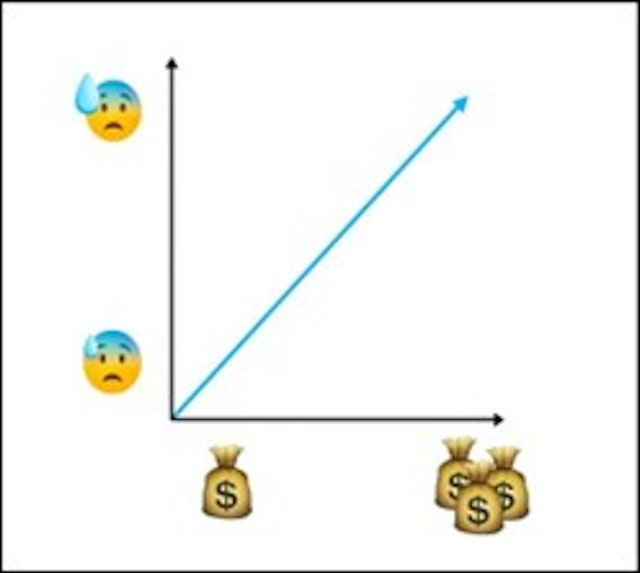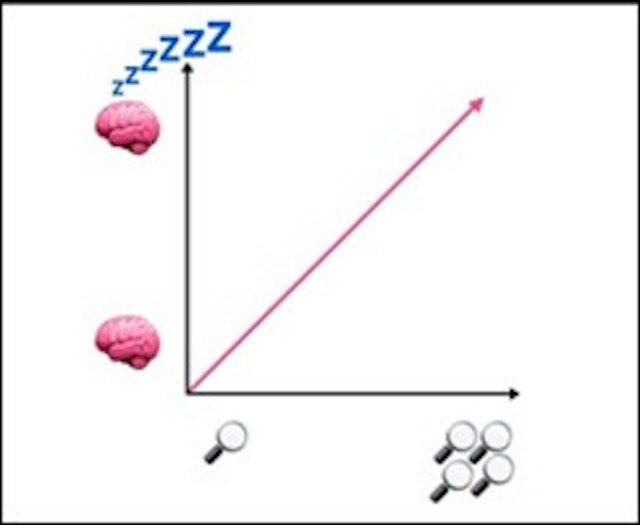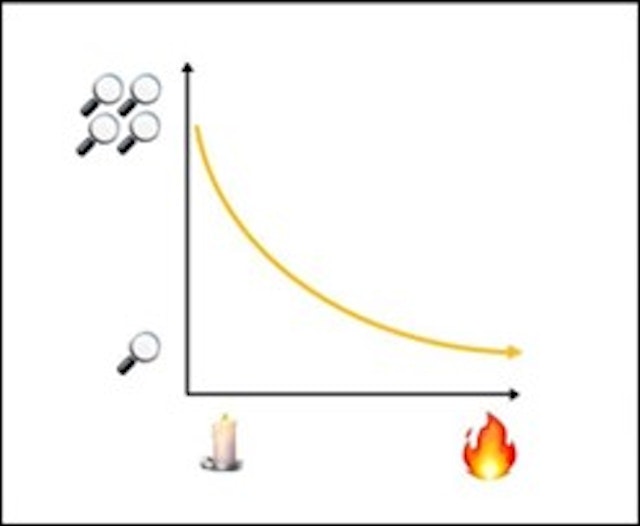3 very unscientific graphs explaining the chaotic Super Bowl celeb salvo
Some research claims ad effectiveness was through the floor this Super Bowl; another revealed the campaigns weren’t very funny either. Bader Rutter’s Ned Brown comes in with a much less scientific explanation of what went wrong.

/ BMW
What a Super Bowl it was (and I’m not talking about the game). We saw it all. For nearly the entirety of the three-and-a-half-hour game, my head felt like it was in a pinball machine. The trend this year, more than ever, leaned toward throwing everything at the audience and hoping, by some chaotic miracle, to break through. We saw 78 celebrities, by my count. They could have fielded an entire football team and still had to cut 25 to get to a roster of 53. We saw all these famous faces forced in like oversized doorstops, jokes with no set-ups, and pop-culture references within pop-culture references.
So why the barrage? Everyone was trying to out-shout everyone else to break through. This handy (not-very-scientific graph) I made illustrates what happens. The more investment a brand makes, the higher the anxiety, the greater the scrutiny, and the more voices giving input.

Then, with all the anxiety, the scrutiny rises, and more marketers try to squeeze every drop out of every millisecond of their airtime. And, as my second not-very-scientific graph shows, all this scrutiny leads to a sort of mental numbness. The barrage becomes the cliché. And it all adds up to nothing. It’s ironic, given brands spent a cool $650m this year.
Advertisement

The result - we saw brands like Pfizer trying to check every box imaginable with a part-history-lesson, part-feel-good, part-mission-for-the-future message. We saw Pringles forcing Chris Pratt into an ad because his last name also starts with P, and he’s sporting an identical mustache to the brand’s icon. And Paramount swarming us with celebrities, including, randomly, the band Creed.
Advertisement
But imagine if all these brands took the energy they put into trying to out-barrage the barrage and diverted it into creating a structure that reduces the scrutiny and number of voices long before any work began? What if they made this the brief? A strategy not for the commercial but for a structure that keeps the focus tight and the scrutiny and voices limited? What if agencies and clients rallied together on this? Just think of the potential.
I’m not in the rooms and meetings to know, but a few brands seemed to have this figured out.
You could tell by what landed on the screen.
Suggested newsletters for you
Their commercials had a simple, compelling premise. And if they used celebrities, there was a logical connection that built on the idea. Take BMW’s ‘Talkin Like Walken.’ It played on the idea that Christopher Walken has the voice that begs to be impersonated (I’ve done it myself). And it paid off with, ‘There’s only one Christopher Walken and only one ultimate driving machine. The rest are just imitations.’ Which is so wonderfully connected back to the brand and product. It’s a beautiful thing. And then, for a little fun twist at the end, the VO guy even tried his own impersonation.
Volkswagen did it, too, with its commercial, ‘An American Love Story.’ It weaved a simple story as we watched the first iconic Volkswagen Bug land on American shores, as it turned heads and then hearts. All set against the fitting score - Neil Diamond’s ‘I am…I said.’ After watching decades of life go by with these cars in our lives, the story culminated in the poignant line, ‘We shape its metal. You shape its soul.’ Perfect.
Even the little-talked-about commercial by running shoe brand Hoka that aired during halftime showed the power of holding tight on a simple idea and letting it shine. We watched a surreal, mysterious, stunning visual of runners running through the air like flocks of birds as a line answered the puzzle, ‘Fly human fly.’
These brands and their commercials stood out because they didn’t give in to the anxiety and scrutiny. As my final not-very-scientific graph shows, when the scrutiny is limited, a brand can leave us with something to feel – whether it be a good laugh, a tug on the heart or a dose of inspiration.

When you can do that and make over 100 million people feel something other than mental numbness, it’s well worth the $7m price tag. And without an army of 78 celebrities to do it.

